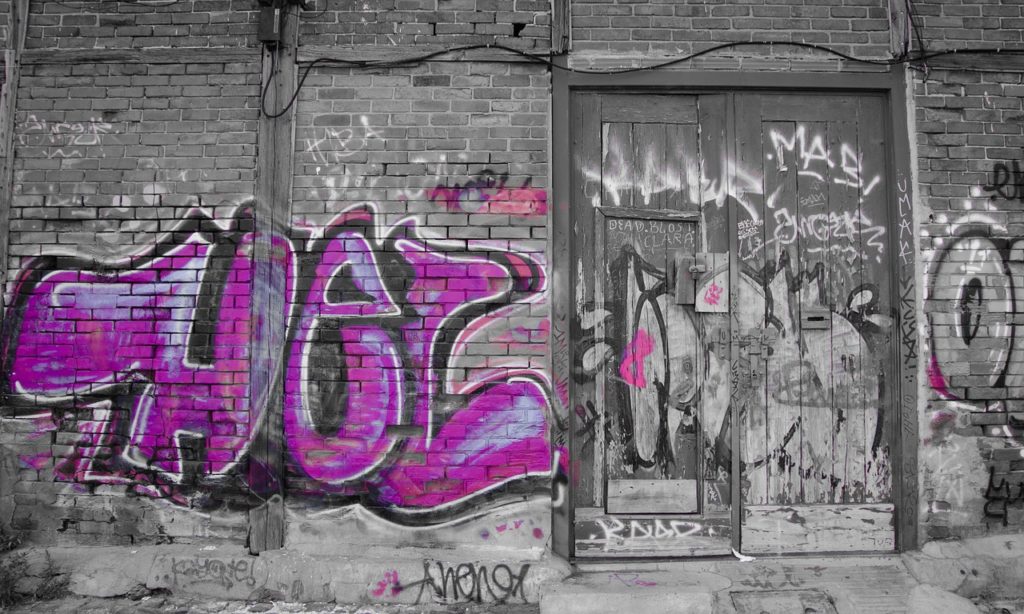Graffiti on the Berlin Wall may have become a symbol of freedom, but many heritage structures around the world are in grave danger of being scarred for eternity by a can of spray paint. From professions of love and profanity to messages of peace and protest, stone monuments around the world have seen it all. Efforts to make our monuments pristine again, however, have only seen moderate success.
Visually removing all traces of graffiti is not enough; with increasingly stronger paints available in the market, conservators (the people responsible for preserving our treasured works of art and monuments) have to work extra hard to prevent the chemicals in strong paints from seeping into fissures in the stone and damaging them in the long run. This also means that powerful chemicals cannot be used to clean away the graffiti, either.
Lasers, with their high precision and minimal chemical impact, have emerged as the tool of choice to tackle this problem. The principle behind laser cleaning is astonishingly simple – a laser beam, with its narrow area of focus, carries enough heat to vaporize particles that cross its path. The trick is getting the numbers right. A laser beam of very high intensity could damage a surface instead of vaporizing only the foreign particles, whereas a beam of very low intensity would have no discernible effect.
Laser cleaning to remove graffiti off stone also depends on the type of stone. A coarse-grained stone would allow foreign particles to penetrate so deep that it would be difficult for the laser beam to even reach them. A fine-grained stone, on the other hand, while blocking the entry of foreign particles, would also melt (yes, melt!) because of the intense heat given off by the beam.
In a collaborative study, scientists from Spain and Greece used a combination of two laser beams – one with an ultraviolet-region wavelength, and the other with an infrared-region wavelength, to remove black, blue, and silver graffiti paints sprayed on Vilachán granite slabs. They also tested the effect of these beams on the internal composition of the granite.
Selecting the right energy (and hence, wavelength) of a laser beam is like walking a tightrope: the energy of a beam needs to be the minimum possible to avoid melting biotite (the most laser-sensitive mineral in granite) and thus damaging the stone, but also needs to be adequate to initiate the removal of paint. A commonly used type of laser called a neodymium-doped yttrium aluminum garnet laser was modified to operate at two wavelengths, and the researchers first calculated the energy, or “fluence” of the laser beams, which they could use to remove the paints off the granite slabs.
The two wavelengths they used were ultraviolet and infrared. A pure ultraviolet beam and a beam that was a combination of both infrared and ultraviolet were more successful in removing the blue and black paints as compared to the pure infrared beam. A closer look at the rock with a microscope confirmed that the pure infrared beam was not successful in removing all traces of blue and black paints from the slabs. Furthermore, laser cleaning with the pure infrared beam darkened the color of the rock, indicating damage to the rock.
One downside to using the pure ultraviolet beam was that the original color of the rock faded after laser cleaning with it. The combined beam, with both infrared and ultraviolet, was the best of both worlds. It seemed to cause less fading. However, the researchers caution readers that just because the original color could not be recovered, that does not mean the laser wasn’t effective. The paint may have seeped too deep into the stone for the laser to reach it. Nevertheless, discoloration of the stone, change in the texture of the stone, and biotite melting were all minimized when using a combination of ultraviolet and infrared beams.
Interestingly, none of the beams (or their combination) could completely remove silver paint off the granite. Silver paint had a different chemical makeup as compared to the other two paints, which would have affected its response to these laser beams.
Laser cleaning with the combined beam, although not entirely successful, was still promising. This beam of hope is all that scientists need, though, to play around with and hit upon that eureka combination which will make our heritage whole again.


